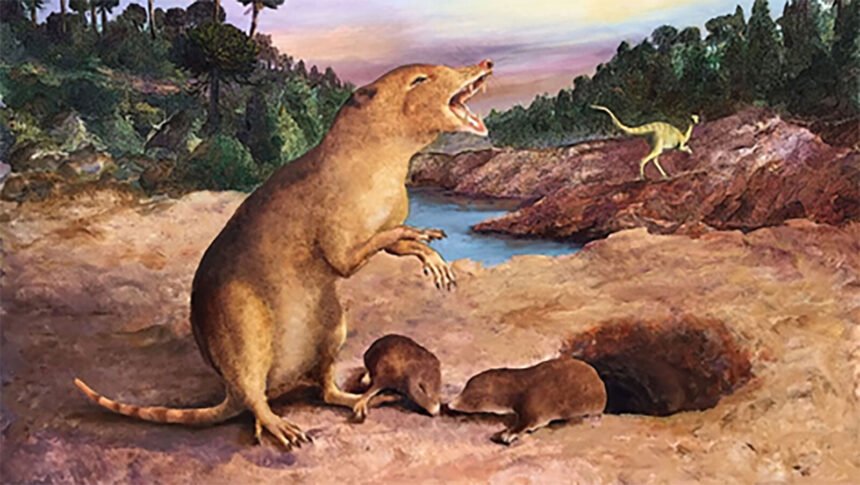A shrew-like creature that lived 225 million years ago is the oldest mammal ever identified

Illustration of Brasilodon quadrangularis
By Lianne Kolirin, CNN
The world’s oldest mammal has been identified using fossil dental records — predating the previously confirmed earliest mammal by about 20 million years — in a new discovery hailed as “very significant” by researchers.
Brasilodon quadrangularis was a small shrew-like creature, around 20 centimeters (8 inches) long, that walked the earth 225 million years ago at the same time as some of the oldest dinosaurs and sheds light on the evolution of modern mammals, according to a team of Brazilian and British scientists.
The discovery was made by researchers from the Natural History Museum in London, King’s College London and the Federal University of Rio Grande do Sul in Porto Alegre.
Scientists relied on clues provided by fossils of hard tissues such as bones and teeth. This is because mammalian glands, which produce milk, have not been preserved in any fossils found to date.
Until now, the Morganucodon had been considered the first mammal, with isolated teeth showing that it dated back around 205 million years. The Morganucodon had a small gerbil-like body and a long face similar to those of shrews or civets.
The dental records in the study published Tuesday in the Journal of Anatomy date Brasilodon quadrangularis to 225 million years ago — 25 million years after the Permian-Triassic mass extinction event — the third and biggest mass extinction, when more than 90% of species in the ocean disappeared and 70% of land animals died out.
Mistaken identity
Martha Richter, a scientific associate at the museum and senior author on the paper, told CNN that the Brasilodon quadrangularis was previously believed to be an “advanced reptile,” but examination of its teeth show “definitively” that it was a mammal.
“If you think about reptiles, they have many, many different replacement teeth throughout their lives but we mammals only have two. Firstly, the milk teeth and then the second dentition which replaces the original set. This is what defines mammals,” Richter said.
Brasilodon is the oldest extinct vertebrate with two successive sets of teeth — baby teeth and one permanent set — also known as a diphyodonty, the news release said.
The first set starts developing during the embryonic stage and the second set develops after birth.
Richter and her colleagues examined three lower jaws of the species, which lived in the region covered today by the southern-most section of Brazil. Under the microscope they discovered “the type of replacement teeth that are only present in mammals,” she said.
Richter added: “This was a very, very small mammal that was probably a burrowing animal living in the shadows of the oldest dinosaurs that we know from that period.”
She said the team had been working on the project for more than five years and described their discovery as “very significant.”
In the news release, Richter said the findings contributed “to our understanding of the ecological landscape of this period and the evolution of modern mammals.”
Moya Meredith Smith, contributing author and professor of evolutionary dentoskeletal biology at King’s College London, said in the release: “Our paper raises the level of debate about what defines a mammal and shows that it was a much earlier time of origin in the fossil record than previously known.”
The-CNN-Wire
™ & © 2022 Cable News Network, Inc., a Warner Bros. Discovery Company. All rights reserved.